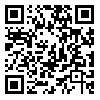دوره 10، شماره 19 - ( 6-1399 )
جلد 10 شماره 19 صفحات 56-31 |
برگشت به فهرست نسخه ها
Download citation:
BibTeX | RIS | EndNote | Medlars | ProCite | Reference Manager | RefWorks
Send citation to:



BibTeX | RIS | EndNote | Medlars | ProCite | Reference Manager | RefWorks
Send citation to:
Majidi C, Saffari M, Khabiri M. Adventure Sports Development Paradigm. JRSM 2020; 10 (19) :31-56
URL: http://jrsm.khu.ac.ir/article-1-2471-fa.html
URL: http://jrsm.khu.ac.ir/article-1-2471-fa.html
مجیدی چالاک، صفاری مرجان، خبیری محمد. الگوی توسعه ورزش های ماجراجویانه. پژوهش در مدیریت ورزشی و رفتار حرکتی. 1399; 10 (19) :31-56
چالاک مجیدی1 
 ، مرجان صفاری2
، مرجان صفاری2 
 ، محمد خبیری3
، محمد خبیری3 


 ، مرجان صفاری2
، مرجان صفاری2 
 ، محمد خبیری3
، محمد خبیری3 

1- دانشگاه خوارزمی ، chalakmajidi@gmail.com
2- دانشگاه تربیت مدرس
3- دانشگاه تهران
2- دانشگاه تربیت مدرس
3- دانشگاه تهران
چکیده: (7681 مشاهده)
در سالهای اخیر ورزشهای ماجراجویانه سریعاً در حال رشد بوده است. ورزشهای ماجراجویانه فعالیتهایی جدید و جذاب و بهطور معمول شامل میزانی از چالشهای فیزیکی و ذهنی و حضور نسبی مولفه طبیعت هستند. فعالیتهای ماجراجویانه مسیرهای جدیدی را در فعالیت ورزشی ارائه کردهاند و گاهی به عنوان رقیب ورزشهای مرسوم معرفی میشوند. هدف این پژوهش ارائه الگویی برای توسعه ورزشهای ماجراجویانه بود. بدین منظور از روش کیفی و با استفاده از استراتژی تحقیق نظریه دادهبنیاد با رویکرد اشتراوس و کوربین انجام شد. منابع جمعآوری دادهها شامل مبانی نظری (کتابها و مقالات)، مصاحبه با متخصصین ورزشهای تفریحی و ارائهدهندگان خدمات تفریحی فعالیتهای ماجراجویانه، گروههای کانونی و فیلمهای مستند و سینمایی مرتبط با ورزشهای ماجراجویانه میباشد. این پژوهش منتج به ارائه الگوی توسعه ورزشهای ماجراجویانه شد.در این الگوشرایط علّی پدیدآورندهو توسعهدهنده ورزشهای ماجراجویانه، بافت ورزشهای ماجراجویانه، شرایط واسطهای و شرایط زمینهای حاکم، راهبردها و اقدامات لازم برای توسعه ورزشهای ماجراجویانه و پیامدها و نتایج این توسعه ارائه شده است. پیشنهاد میشود برای شناخت و برخورد مناسب با این حوزه که به احتمال زیاد در آینده به یکی از بخشهای اصلی ورزش تبدیل خواهد شد، پژوهشهای علمی بیشتری خصوصاً با رویکرد آیندهپژوهی صورت گیرد.
نوع مطالعه: پژوهشي |
موضوع مقاله:
مدیریت ورزشی
دریافت: 1396/1/29 | پذیرش: 1396/6/12 | انتشار: 1399/6/10
دریافت: 1396/1/29 | پذیرش: 1396/6/12 | انتشار: 1399/6/10
فهرست منابع
1. Harro A. Classification of behavioral goals in the psychomotor area. 2 ed. Tehran: The Ministry of Education, Research and Planning Organization; 1989.
2. Richard M. Motor Learning :Concepts and Applications 8ed. Tehran: Hananeh; 2017.
3. Âbasi S, Hadian MR. The Effect of Eye-Hand Coordination Activities on Hand Skills of 7-10 Year-Old Educable Students with Down Syndrome. Journal of Mazandaran University of Medical Sciences. 2011;21(83):54-8.
4. Swinnen SP, Lee TD, Verschueren S, Serrien DJ, Bogaerds H. Interlimb coordination: Learning and transfer under different feedback conditions. Human movement science. 1997;16(6):749-85. [DOI:10.1016/S0167-9457(97)00020-1]
5. Ghanavati T, Salavati M, Karimi N, Negahban H, Takamjani IE, Mehravar M, et al. Intra-limb coordination while walking is affected by cognitive load and walking speed. Journal of biomechanics. 2014;47(10):2300-5. [DOI:10.1016/j.jbiomech.2014.04.038]
6. Nagaraj T. Effect of general specific and combined fitness training on selected skill related fitness and performance among cricket players. Paripex-Indian journal of research. 2017; 5(3): 47-48.
7. Abedin M, Ali H, Hadi Y. Effect of Aging and Volleyball Experience on the Continuous Bimanual Coordination Task. Scientific Journal Management System. 2012;2(5):5-18.
8. Desrosiers J, Rochette A, Corriveau H. Validation of a new lower-extremity motor coordination test. Archives of physical medicine and rehabilitation. 2005;86(5):993-8. [DOI:10.1016/j.apmr.2004.11.007]
9. Cardoso AA, Magalhães Lde C. Bilateral coordination and motor sequencing in Brazilian children: preliminary construct validity and reliability analysis. Occupational therapy international. 2009;16(2):107-21. [DOI:10.1002/oti.273]
10. Vaara M, SL K. Reliability of novel coordination and balance tests. 14th International Congress of the World Confederation for Physical Therapy 7-12 June; Barcelona, Spain2003.
11. Ong NCH. The use of the Vienna Test System in sport psychology research: A review. International Review of Sport and Exercise Psychology. 2015;8(1):204-23. [DOI:10.1080/1750984X.2015.1061581]
12. Chraif M, Ani ei M. Gender Differences in Motor Coordination at Young Students at Psychology. International journal of social science and humanity. 2013:147-50. [DOI:10.7763/IJSSH.2013.V3.215]
13. Nazemzadegan g, bagherzadeh f, hemayattalab r, farsi a. The Comparison of the Effect of Cognitive Load on Duration and Accuracy of Bimanual Coordination Task. Journal of Motor Learning and Movement. 2010;2(1):133-49.
14. Farsi A, Abdoli B, Kaviyani M. The Comparison of the Effects of Attentional-Cognitive Load and Motor-Cognitive Load on Bimanual Coordination Performance. Development & Motor Learning. 2011;3(7):43-.
15. Heydar S, Mohammad H. Design, construction, validation and reliability of simultaneous kinematic measurement of kinematic motion and distribution of water pressure in swimming. Sports Medicine Studies. 2010(7):31-46.
16. Latash ML. Fundamentals of Motor Control. San Diego: Academic Press; 2012. 149-70 p. [DOI:10.1016/B978-0-12-415956-3.00009-9]
ارسال پیام به نویسنده مسئول
| بازنشر اطلاعات | |
 | این مقاله تحت شرایط Creative Commons Attribution-NonCommercial 4.0 International License قابل بازنشر است. |






